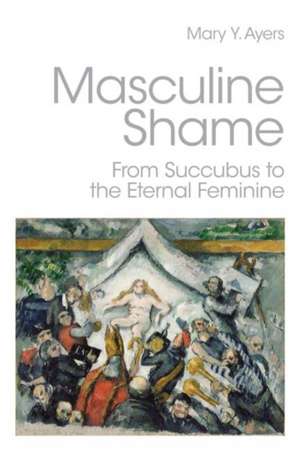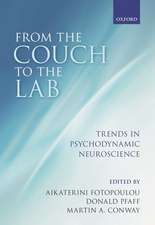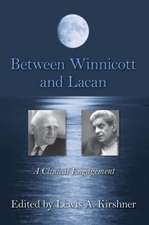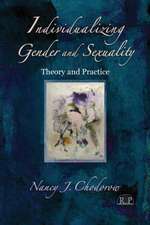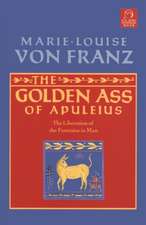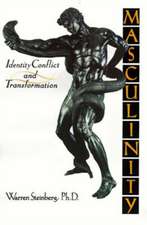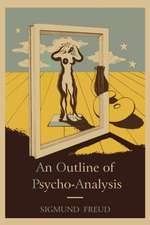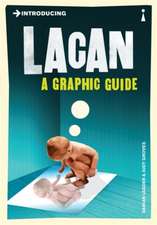Masculine Shame: From Succubus to the Eternal Feminine
Autor Mary Y. Ayersen Limba Engleză Paperback – 23 mar 2011
Masculine Shame: From Succubus to the Eternal Feminine explores the idea that the image of the succubus, a demonic female creature said to emasculate men and murder mothers and infants, has been created out of the masculine projection of shame and looks at how the transformation of this image can be traced through Western history, mythology, and Judeo-Christian literature.
Divided into three parts areas of discussion include:
- the birth of civilization and the evolution of the succubus
- the image of the succubus in the writings of Freud and Jung
- the succubus as child killing mother to the restoration of the eternal feminine.
| Toate formatele și edițiile | Preț | Express |
|---|---|---|
| Paperback (1) | 395.26 lei 6-8 săpt. | |
| Taylor & Francis – 23 mar 2011 | 395.26 lei 6-8 săpt. | |
| Hardback (1) | 970.15 lei 6-8 săpt. | |
| Taylor & Francis – 24 mar 2011 | 970.15 lei 6-8 săpt. |
Preț: 395.26 lei
Preț vechi: 416.06 lei
-5% Nou
Puncte Express: 593
Preț estimativ în valută:
75.63€ • 79.18$ • 62.58£
75.63€ • 79.18$ • 62.58£
Carte tipărită la comandă
Livrare economică 05-19 aprilie
Preluare comenzi: 021 569.72.76
Specificații
ISBN-13: 9780415390392
ISBN-10: 0415390397
Pagini: 208
Ilustrații: 10 line drawings
Dimensiuni: 156 x 234 x 11 mm
Greutate: 0.3 kg
Ediția:New.
Editura: Taylor & Francis
Colecția Routledge
Locul publicării:Oxford, United Kingdom
ISBN-10: 0415390397
Pagini: 208
Ilustrații: 10 line drawings
Dimensiuni: 156 x 234 x 11 mm
Greutate: 0.3 kg
Ediția:New.
Editura: Taylor & Francis
Colecția Routledge
Locul publicării:Oxford, United Kingdom
Public țintă
Professional Practice & DevelopmentCuprins
Preface. Part I: The Birth of Civilization and the Evolution of the Succubus. The Succubus, the Evil Eye and Shame. The Historic Unfolding of the Image of the Succubus. Part II: The Image of the Succubus in the Writings Freud and Jung. The Split Between Freud and Jung. Sigmund Freud’s Medusa. Siegfried to Salome: Jung’s Heroic Journey. The Blinded Eternal Feminine. Part III: From the Succubus as Child Killing Mother to the Restoration of the Eternal Feminine. The Succubus of Early Infancy. The Evil Female Demon. Epilogue: Envisioning a Return of the Eternal Feminine.
Notă biografică
Mary Y. Ayers, Ph.D. is the author of Mother-Infant Attachment and Psychoanalysis: The Eyes of Shame, (Routledge, 2003), winner of the NAAP Gradiva Award (2004). She currently works in private practice in the suburbs of Washington, D.C. where she specializes in analytic work with children and adults.
Recenzii
"This book is worth reading for chapter 7 alone, which is perhaps the most beautifully written and most psychologically-minded account that I have yet read of how an infant develops a sense of self and identity through processes of early attachment, recognition, empathic mirroring and individuation... I would highly recommend this book, as I have said, for the brilliance of chapter 7 and also because the succubus is a neglected aspect of our study of gender issues that Ayers passionately and articulately brings to life." - Martin Seager, International Journal of Jungian Studies, March 2012
"This book is part of the movement to save humanity from a warrior code of masculinity that belongs in a former era. I highly recommend it to all students of gender, religion, the arts, myth, ecology, and depth psychology." - Susan Rowland, Journal of Jungian Scholarly Studies, Vol. 7, No. 5, 2012
"This book is part of the movement to save humanity from a warrior code of masculinity that belongs in a former era. I highly recommend it to all students of gender, religion, the arts, myth, ecology, and depth psychology." - Susan Rowland, Journal of Jungian Scholarly Studies, Vol. 7, No. 5, 2012
Descriere
This book explores the idea that the image of the succubus, a demonic female creature said to emasculate men and murder mothers and infants, has been created out of the masculine projection of shame and looks at how the transformation of this image can be traced through Western history, mythology, and Judeo-Christian literature.
